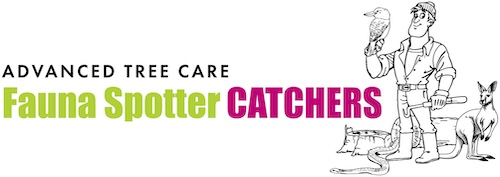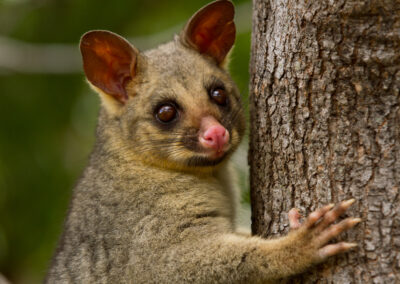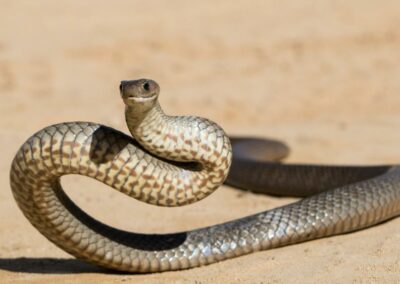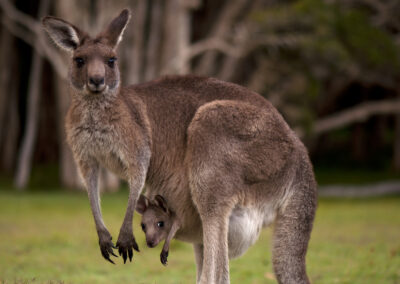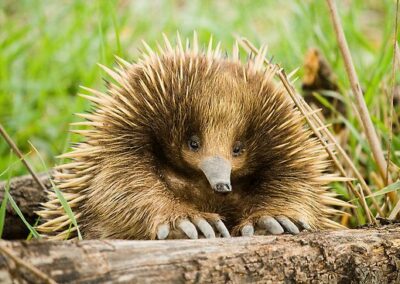FAQs: Advanced Tree Care Fauna Spotter Catchers
We often receive questions about our services. Here are some of the most frequently asked questions (FAQs):
What is a fauna spotter catcher, and why do I need one?
A fauna spotter catcher is a licensed professional trained to assess, rescue, relocate, and protect wildlife during land clearing, construction, or development projects. You need one to comply with environmental regulations, prevent harm to wildlife, and avoid legal penalties when working in areas that may impact native fauna.
What types of animals do you relocate?
Fauna spotter catchers relocate a variety of native wildlife, including koalas, possums, birds, reptiles (like snakes and lizards), frogs, and bats. Our expertise extends to any species that may be at risk during land clearing or construction.
When do I need to engage a fauna spotter catcher for my project?
A fauna spotter catcher should be engaged before any land clearing or construction begins. Ideally, they are involved during the planning stages to conduct pre-clearance habitat inspections and surveys. This ensures that wildlife is identified and relocated safely before clearing operations start.
What happens during a pre-clearance fauna survey?
During a pre-clearance survey, the fauna spotter catcher inspects the area to identify potential wildlife habitats such as nests, hollows, or burrows. They mark these areas and either relocate the animals or provide advice on how to proceed without harming them. They also document any significant flora or fauna and provide a report for compliance purposes.
How long does fauna relocation take?
The duration of fauna relocation depends on the size of the project and the complexity of the site. A small area might be cleared in a day, while larger areas with dense vegetation or multiple species may take several days or weeks to ensure all fauna is safely relocated.
What laws require me to use a fauna spotter catcher?
Several Australian environmental laws and regulations may require you to use a fauna spotter catcher, such as the Nature Conservation Act 1992 (Qld), the Environmental Protection and Biodiversity Conservation Act 1999 (Cth), and local council regulations. These laws protect native wildlife, especially Endangered, Vulnerable, and Near Threatened (EVNT) species.
What kind of reports do you provide?
Advanced Tree Care Fauna spotter catchers provide detailed reports that document the fauna present on-site, any relocations that occur, and recommendations for ongoing habitat protection. These reports are essential for regulatory compliance and are often required by environmental authorities to demonstrate adherence to wildlife protection laws.
What happens if we find a threatened or endangered species?
If a threatened or endangered species is discovered, we will follow strict protocols to ensure its protection. This may involve halting work in the area, contacting relevant authorities, and developing a plan to relocate the species to a safe and suitable habitat. Legal protections for these species are very strict, so extra care is taken.
Can you help with habitat restoration or creation?
Yes, we often assist with habitat restoration and creation. They provide advice on replanting native vegetation, installing artificial habitats like nest boxes, and improving existing habitats to support displaced wildlife after relocation.
What equipment do you use for fauna detection and relocation?
We use a range of tools, including thermal cameras, drones, and other technology to detect wildlife, particularly in dense or hard-to-reach areas. We may also use elevated platforms and chainsaws to safely rescue animals from tree hollows during land clearing.
How do you ensure the animals are safe after relocation?
After relocation, we monitor the wildlife in their new habitats to ensure they adapt successfully. We may track animals or regularly visit relocation sites to check on their welfare. Additionally, we choose suitable habitats that closely match the animals’ original environment to increase the chances of survival.
How much does a fauna spotter catcher service cost?
The cost varies depending on the size and complexity of the project, the number of animals involved, and the time required for surveys, relocations, and reporting. It’s best to request a quote based on your specific project needs.
What is fauna translocation, and how does it differ from relocation?
Fauna relocation involves moving wildlife to a nearby suitable habitat, while translocation involves moving animals to a new area, often much farther away, when their original habitat is no longer viable (e.g., due to large-scale development or habitat destruction).
Can fauna spotter catchers work on both small and large projects?
Yes, Advanced Tree Care Fauna Spotter Catchers work on projects of all sizes, from small residential developments to large-scale infrastructure projects like mining, pipelines, or road construction. We adapt our services to the specific needs of the project and its environmental impact.
